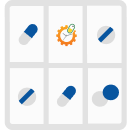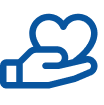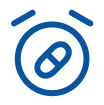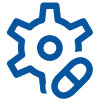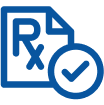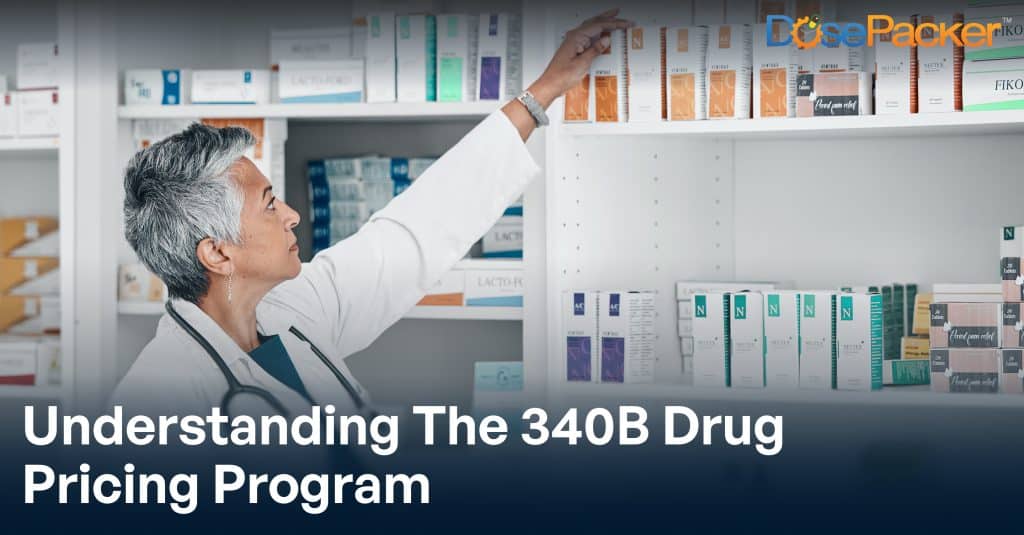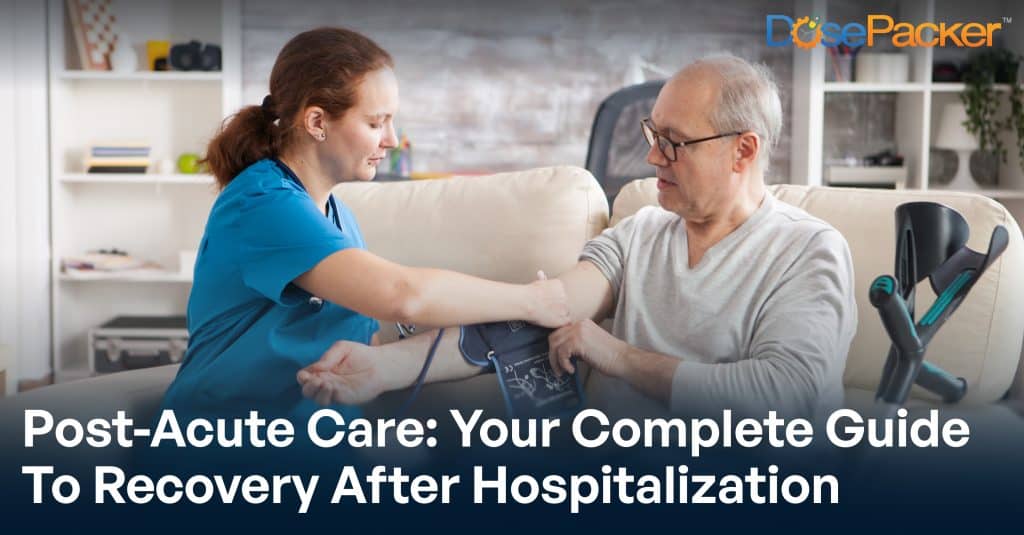Unlock the latest in medication management technology and grow your care community with us.

Healthcare providers across America face a crucial challenge: delivering quality care while managing prescription costs that continue to outpace inflation. For safety-net providers serving vulnerable populations, a single federal program has become indispensable for organizational survival and mission fulfillment.
The 340B Drug Pricing Program represents the nation’s most significant pharmaceutical discount initiative, enabling eligible healthcare organizations to reduce drug acquisition costs by 25-50% and reinvest those savings directly into patient care. Named after Section 340B of the Public Health Service Act, this program has quietly transformed how over 50,000 covered entity sites deliver healthcare to underserved communities.
Yet many healthcare leaders struggle to maximize 340B benefits due to complex compliance requirements, manufacturer restrictions, and operational inefficiencies that erode potential savings. The difference between merely participating in the 340B program and truly optimizing it often comes down to having the right systems, processes, and technology infrastructure in place.
Whether you’re a healthcare administrator at a federally qualified health center (FQHC), a pharmacy director at a disproportionate share hospital (DSH), or a C-suite executive evaluating operational improvements, understanding how to leverage the 340B program strategically is essential for financial sustainability and expanded patient services.
What Is The 340B Drug Pricing Program?
The 340B drug pricing program is a federal initiative administered by the Health Resources and Services Administration (HRSA) that requires pharmaceutical manufacturers to provide outpatient drugs to covered entities at significantly discounted prices. Established in 1992 through the Veterans Health Care Act, the program’s statutory purpose is to enable safety-net providers to “stretch scarce federal resources as far as possible, reaching more eligible patients and providing more comprehensive services.”
According to the HRSA, the program has expanded substantially, with over 50,000 covered entity sites participating as of 2024, representing approximately 40% of all U.S. hospitals and thousands of community health centers. Drug manufacturers who wish to have their products covered by Medicaid and Medicare Part B must participate by offering covered outpatient drugs at the 340B ceiling price.
The 340B ceiling price is calculated using a statutory formula: the average manufacturer price (AMP) minus the unit rebate amount (URA). This formula typically results in discounts ranging from 20% to 50% below wholesale acquisition costs, although savings vary by drug type and manufacturer.
For context, a specialty medication with a wholesale cost of $10,000 per month may cost a 340B covered entity $5,000 to $6,500, resulting in savings that can be reinvested in hiring additional staff, extending operating hours, or subsidizing care for uninsured patients.
Unlike patient assistance programs that directly subsidize individual prescriptions, 340B provides institutional savings that support the covered entity’s broader mission. Organizations can utilize these savings to expand comprehensive services, invest in healthcare infrastructure, offer free or reduced-cost medications, or enhance chronic disease management programs — all of which are crucial for populations facing significant barriers to healthcare access.
The operational challenge: With thousands of prescriptions flowing through 340B pharmacies each month and stringent compliance requirements, many covered entities lack the necessary systems to capture maximum program value while maintaining audit readiness.
Who Qualifies For 340B?
Eligibility for the 340B program is strictly defined by federal statute, with specific qualifying criteria that covered entities must continuously maintain.
1. Federal Grantees
Federal Grantees include Federally Qualified Health Centers (FQHCs and FQHC Look-Alikes), Ryan White HIV/AIDS Program grantees, tuberculosis clinics, black lung clinics, hemophilia treatment centers, urban Indian organizations, Title X family planning clinics, Native Hawaiian Health Centers, and sexually transmitted disease clinics. These organizations qualify based on their federal grant status and must register with HRSA’s Office of Pharmacy Affairs (OPA).
2. Hospitals
Hospitals can qualify as covered entities if they meet disproportionate share hospital (DSH) criteria under Section 1923 of the Social Security Act, meaning they serve a disproportionately high proportion of low-income patients. Additional hospital qualifying categories include children’s hospitals, freestanding cancer hospitals exempt from Medicare’s prospective payment system, sole community hospitals, rural referral centers, and critical access hospitals.
3. The Patient Definition
Not every prescription qualifies for 340B pricing, even at covered entities. HRSA’s patient definition requires that individuals have an established relationship with the covered entity, receive healthcare services from a provider employed by or under contract with the entity, and that the covered entity maintains responsibility for the patient’s care. The medication must be prescribed by an authorized healthcare provider and used to treat a condition that is managed by the covered entity.
4. Registration And Ongoing Compliance
Covered entities must register through the OPA database, recertify their eligibility quarterly, maintain detailed records documenting 340B purchases and dispensing, implement systems preventing duplicate discounts with Medicaid, and submit to regular HRSA audits. Non-compliance can result in corrective action plans, required repayment of improperly claimed discounts, or removal from the program entirely.
Benefits Of The 340B Program
The 340B program delivers multifaceted advantages that extend far beyond simple cost reduction, fundamentally enabling safety-net providers to fulfill their mission despite challenging financial realities.
Quantifiable Financial Impact
Research published in Health Affairs demonstrates that 340B hospitals provide significantly more uncompensated care and community benefits compared to non-340B hospitals. A large FQHC system might save $3-5 million annually through 340B pricing, while a DSH hospital could save $10-20 million or more, depending on prescription volume.
These savings translate into tangible expanded services:
- Additional clinical staff serving 15-20% more patients annually,
- Extended pharmacy hours including evenings and weekends,
- Comprehensive medication therapy management programs,
- Chronic disease management clinics for diabetes, hypertension, and asthma,
- Transportation assistance, removing barriers to care access,
- Sliding-scale fee structures that ensure care regardless of ability to pay.
Enhancing Patient Outcomes Through Operational Excellence
For 340B covered entities processing 5,000-50,000+ prescriptions monthly, operational efficiency has a direct impact on both financial performance and patient health outcomes. Every minute spent on manual prescription processing, inventory reconciliation, or compliance documentation is a minute not spent on patient care, a critical concern, given the healthcare workforce shortage affecting 80% of organizations.
Combating The Medication Adherence Challenge
Medication adherence represents one of the healthcare industry’s most significant challenges and opportunities. Studies show that approximately 50% of medications for chronic diseases are not taken as prescribed, leading to an estimated 125,000 deaths and $300 billion in preventable healthcare costs annually. For patients managing multiple chronic conditions, the typical profile at 340B covered entities, complex medication regimens become overwhelming.
Modern pharmacy automation and intelligent medication packaging systems address this challenge while supporting 340B operational requirements. Automated dose packaging organizes multiple medications into individualized packets, sorted by date and time, which dramatically simplifies medication adherence for patients. For pharmacies, these systems process prescriptions three to five times faster than manual packaging while generating comprehensive documentation to support compliance audits.
Organizations like DosePacker specialize in providing healthcare-grade automated packaging solutions designed specifically for high-volume safety-net pharmacy operations. Their systems integrate with existing pharmacy management software to streamline 340B workflows, create audit-ready documentation, support medication synchronization programs, and improve patient adherence through organized, easy-to-use medication packets.
Challenges And Compliance Considerations
While the 340B program delivers substantial benefits, covered entities face escalating compliance complexity and operational challenges that can undermine program value, or worse, result in audit findings and penalties.

Audit Requirements And Documentation Standards:
The HRSA conducts regular audits to determine whether covered entities are properly implementing the 340B program. These audits review 6-12 months of pharmacy records, scrutinizing patient eligibility, preventing duplicate discounts, contract pharmacy arrangements, and inventory management practices.
Audit findings of non-compliance can trigger corrective action plans requiring extensive remediation, financial liability for improperly claimed discounts totaling hundreds of thousands or millions of dollars, and, in severe cases, removal from the 340B program entirely, which can be devastating for organizations that depend on 340B savings for operational viability.
Real-world example: In 2022, several covered entities faced HRSA findings related to inadequate systems for preventing duplicate Medicaid discounts. Without integrated technology flagging Medicaid-eligible prescriptions, manual processes failed to catch violations. The resulting financial liability and corrective action required significant resources to address, resources that came directly from patient care budgets.
The Duplicate Discount Prohibition:
One of the most technically complex compliance areas involves preventing duplicate discounts, simultaneously claiming 340B pricing and Medicaid drug rebates for the same prescription. Covered entities must implement sophisticated systems that identify Medicaid-eligible patients at the point of sale, exclude those prescriptions from 340B claims or report them to state Medicaid agencies for rebate exclusion, maintain detailed documentation of the methodology used, and reconcile data across multiple systems quarterly.
Manual approaches to preventing duplicate discounts create significant audit risk. A single missed Medicaid claim among thousands of monthly prescriptions can trigger audit findings. Covered entities need integrated technology solutions that automatically flag potential duplicate discount scenarios in real-time.
Manufacturer Restrictions Eroding Program Value
In recent years, pharmaceutical manufacturers have unilaterally imposed restrictions on 340B contract pharmacy arrangements, limiting the number of contract pharmacies that can dispense 340B drugs or requiring burdensome claims processes that delay access to discounts. These manufacturer restrictions have created significant operational challenges and reduced program savings, prompting legal action by HRSA and covered entities.
Technology As Compliance Infrastructure
Given these challenges, maintaining 340B compliance requires sophisticated technology infrastructure, not just for efficiency, but for risk mitigation and audit defense. Systems that create comprehensive audit trails documenting each prescription’s journey from acquisition through dispensing provide essential evidence of program integrity.
Advanced medication packaging and pharmacy automation solutions serve dual purposes: improving operational efficiency and workflow while generating compliance documentation. When every packaged prescription creates a digital record that includes a patient identifier, prescriber information, date of service, and medication details, covered entities can build robust audit defense documentation automatically through normal operations.
Struggling with 340B compliance complexity or operational inefficiency? Discover how integrated pharmacy automation solutions can reduce administrative burden while strengthening audit readiness.
Maximizing Your 340B Program Success
Success in the 340B program requires strategic planning that aligns operational capabilities with regulatory requirements and mission-driven patient care goals. Best Practices for Organizational Excellence:
1. Compliance-First Culture
Establish clear 340B policies and procedures documented in writing, conduct quarterly internal audits identifying gaps before HRSA reviews, implement robust staff training programs with annual certification requirements, create documentation standards exceeding minimum regulatory requirements, and designate a 340B program administrator with apparent authority and accountability.
2. Strategic Contract Pharmacy Management
Carefully vet contract pharmacy partners for compliance capabilities, implement written agreements specifying responsibilities and oversight mechanisms, conduct regular compliance reviews of contract pharmacy operations, and maintain systems ensuring visibility into contract pharmacy dispensing.
3. Technology-Enabled Optimization
Modern pharmacy technology transforms the 340B program management from an administrative burden to a strategic asset. Key technology investments include:
- Automated inventory management systems provide real-time visibility into 340B versus non-340B stock, preventing compliance violations while optimizing working capital.
- Integrated prescription workflow automation connecting pharmacy management systems, electronic health records, and state Medicaid systems for automated duplicate discount prevention.
- Intelligent medication packaging automation processes prescriptions 3-5x faster than manual methods while generating comprehensive compliance documentation and improving patient adherence.
The business case for pharmacy automation is straightforward: a $150,000-300,000 investment in automated packaging systems typically delivers ROI within 12-18 months through labor cost reduction, error prevention, improved medication adherence (reducing costly hospitalizations), and enhanced compliance, reducing audit risk. For organizations processing 10,000 or more prescriptions monthly, the efficiency gains alone often justify the investment, before considering the patient safety and compliance benefits.
4. Patient-Centered Outcomes
Ultimately, the 340B program exists to support vulnerable patient populations. High-performing covered entities translate savings into measurable patient benefits through medication therapy management programs where clinical pharmacists optimize medication regimens and address adherence barriers, comprehensive medication synchronization aligning all prescriptions for convenient monthly pickup, patient education programs using organized packaging as teaching tools for proper medication use, and chronic disease management clinics leveraging freed resources from operational efficiency.
The connection between operational efficiency and patient outcomes is direct: pharmacies that spend less time on manual processing and compliance administration have more time for patient counseling, adherence interventions, and clinical services that improve health outcomes.
5. Labor Force Considerations
The healthcare workforce shortage has particularly impacted pharmacies, with many organizations struggling to fill open positions for months. Automation mitigates this challenge by enabling existing staff to serve more patients more effectively. A pharmacy technician using automated packaging equipment can process the same volume of prescriptions as three to four technicians using manual methods, critical when staffing is constrained.
Conclusion
The 340B drug pricing program serves as an essential lifeline for safety-net healthcare providers, enabling organizations that serve vulnerable populations to stretch their limited resources while expanding comprehensive services. From federally qualified health centers in underserved rural communities to disproportionate share hospitals in urban safety-net systems, 340B discounts translate directly into enhanced patient care and improved health outcomes.
However, maximizing the 340B program value in 2024 and beyond requires more than simply purchasing discounted drugs. Success demands strategic operational planning, investment in compliance infrastructure, and technology solutions that transform efficiency while strengthening audit readiness. As regulatory scrutiny intensifies, manufacturer restrictions proliferate, and workforce challenges persist, covered entities that proactively modernize pharmacy operations will be best positioned to sustain their mission.
The covered entities thriving in the 340B program share common characteristics: they treat compliance as organizational infrastructure rather than administrative burden, they invest strategically in technology that delivers operational efficiency and patient outcomes simultaneously, they maintain relentless focus on translating savings into measurable community benefits, and they recognize that pharmacy automation isn’t a luxury, it’s a strategic imperative for sustainable safety-net healthcare.
For 340B pharmacy leaders ready to optimize operations, strengthen compliance, and improve patient outcomes, exploring modern medication packaging solutions represents a strategic next step. DosePacker specializes in providing healthcare-grade automated packaging systems designed specifically for the unique requirements of high-volume 340B pharmacies. Their integrated solutions streamline workflow, enhance adherence, and generate the comprehensive documentation that supports both mission fulfillment and audit defense.
Discover how DosePacker’s innovative packaging solutions can transform your 340B pharmacy operations.







